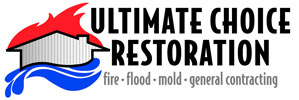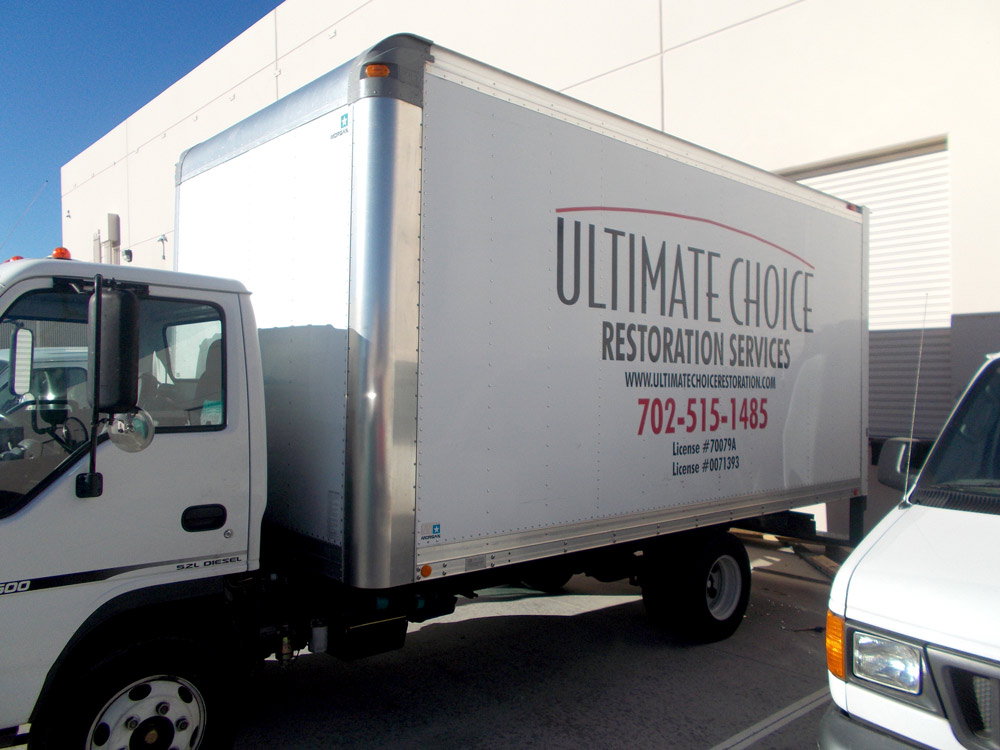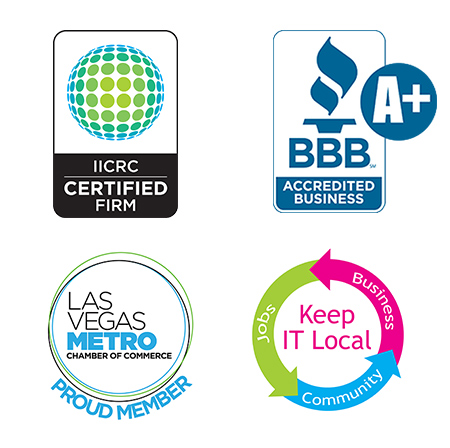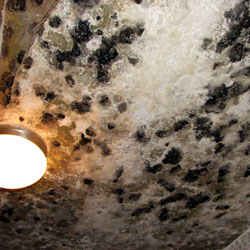 Please DO NOT try to remove mold yourself. You can make it airborne and create a much worse hazardous environment. Containing mold at the source is essential, once mold spores spread it will be much more difficult to capture and remove. All structural and personal materials damaged by mold must be physically removed. Please note that using bleach or other household cleaners does not kill mold and can make it more difficult to visually detect. Mold is caused by moisture, by controlling the moisture in your home or property you can eliminate mold growth. Ensuring that the moisture source is fixed and controlled as soon as possible is essential to limit future contamination and spreading it further.
Please DO NOT try to remove mold yourself. You can make it airborne and create a much worse hazardous environment. Containing mold at the source is essential, once mold spores spread it will be much more difficult to capture and remove. All structural and personal materials damaged by mold must be physically removed. Please note that using bleach or other household cleaners does not kill mold and can make it more difficult to visually detect. Mold is caused by moisture, by controlling the moisture in your home or property you can eliminate mold growth. Ensuring that the moisture source is fixed and controlled as soon as possible is essential to limit future contamination and spreading it further.
We ensure to take all safety and health precautions during mold remediation using personal protective gear such as respirators and coveralls over clothing. Proper containments to isolate the contaminated areas are built and equipment placed to clean the air while collecting and scrubbing contaminated air. Mold growth is not always visually detectable (grows behind surfaces) and may require the professional help of an environmentalist to collect samples for lab testing to confirm if mold is present in the home but not visual. A third party, indoor environmental/hygienist professional can provide a post-remediation verification (also known as clearance testing) to ensure your home or property is safe to return to.
What is Mold?
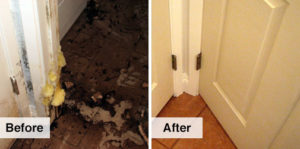 Molds are fungi that can be found both indoors and outdoors. No one knows how many species of fungi exist but estimates range from tens of thousands to perhaps three hundred thousand or more. Molds grow best in warm, damp, and humid conditions, and spread and reproduce by making spores. Mold spores can survive harsh environmental conditions, such as dry conditions, that do not support normal mold growth.
Molds are fungi that can be found both indoors and outdoors. No one knows how many species of fungi exist but estimates range from tens of thousands to perhaps three hundred thousand or more. Molds grow best in warm, damp, and humid conditions, and spread and reproduce by making spores. Mold spores can survive harsh environmental conditions, such as dry conditions, that do not support normal mold growth.
What is toxic mold?
Toxic mold is a type of mold that produces hazardous byproducts, called mycotoxins. While individuals with asthma and other respiratory problems may have reactions to many types of mold, it’s thought that mycotoxins are more likely to trigger health problems in even healthy individuals. These toxins are believed to be linked to memory loss and to severe lung problems in infants and the elderly.
Floating particles of mold are invisible to the naked eye, so it’s impossible to see where they might have landed until they begin to grow. Loose mold particles that accumulate on items within a house are easily inhaled and can be a constant irritation to the people and pets who live there.
The toxic mold we hear most about is Stachybotrys chartarum, a slimy, greenish-black mold that grows on moisture-laden materials that contain cellulose, such as wood, paper, drywall, and other similar products. It does not grow on tile or cement.
Bleach does not remediate mold
Even though chlorine bleach is often used to kill mold, bleach is NOT an EPA-approved biocide. It doesn’t kill the “roots” of the spores and therefore will come back up.
10 things you should know about mold
- Potential health effects and symptoms associated with mold exposures include allergic reactions, asthma, and other respiratory complaints.
- There is no practical way to eliminate all mold and mold spores in the indoor environment; the way to control indoor mold growth is to control moisture.
- If mold is a problem in your home or school, you must clean up the mold and eliminate sources of moisture.
- Fix the source of the water problem or leak to prevent mold growth.
- Reduce indoor humidity (to 30-60%) to decrease mold growth by: venting bathrooms, dryers, and other moisture-generating sources to the outside; using air conditioners and de-humidifiers; increasing ventilation; and using exhaust fans whenever cooking, dishwashing, and cleaning.
- Clean and dry any damp or wet building materials and furnishings within 24-48 hours to prevent mold growth.
- Clean mold off hard surfaces with water and detergent, and dry completely. Absorbent materials such as ceiling tiles, that are moldy, may need to be replaced.
- Prevent condensation: Reduce the potential for condensation on cold surfaces (i.e., windows, piping, exterior walls, roof, or floors) by adding insulation.
- In areas where there is a perpetual moisture problem, do not install carpeting (i.e., by drinking fountains, by classroom sinks, or on concrete floors with leaks or frequent condensation).
- Molds can be found almost anywhere; they can grow on virtually any substance, providing moisture is present. There are molds that can grow on wood, paper, carpet, and foods.
Do homeowners insurance policies cover mold damage?
It depends on what caused the mold and the policy coverage you have. Molds need water or moisture to grow, but not all causes of water damage are covered by homeowners insurance policies.
Most standard homeowners policies do not cover water damage caused by “maintenance” problems, such as continuous or repeated water seepage or leakage, humidity or condensation problems, or landscaping or drainage problems. Therefore, if one of these water or moisture problems results in mold, it would probably not be covered by your policy.
Mold coverage is typically additional from the standard policy just as flood insurance. Some policies have limits set on how much they will cover (e.g. $5000) for remediation and repairs. They also place higher restrictions on the coverage. You can check your policy or ask your agent for help.
Regardless of whether your insurance policy covers the water loss or resulting mold, you should take immediate action to protect your property and prevent mold growth that could cause further damage.
Common mold exposure symptoms
- Runny nose
- Recurrent colds
- Coughing
- Wheezing
- Shortness of breath
- Headaches
- Eye irritation
- Skin irritation
- Dizziness
- Nausea
- Asthma
Common indoor molds
- Cladosporium
- Stachybotrys Chartarum
- Aspergillus
- Penicillium
- Alternaria
